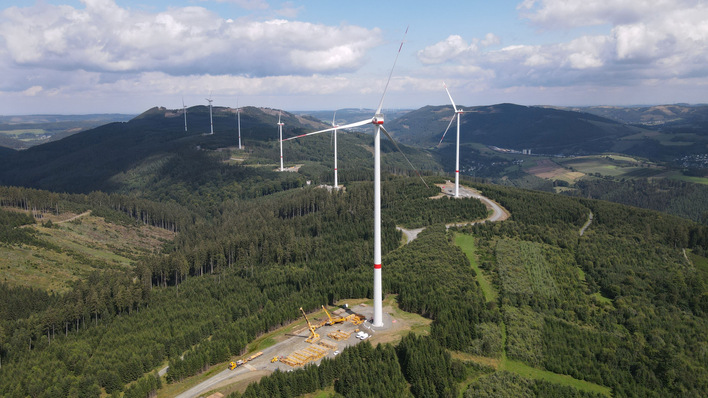At 13 GW, the power generation capacity of China built in the 2009 is equivalent to that of 13 typical nuclear power plants and or 18% of South Korea’s total power generation.
At the end of 2009, China had 25.3 GW of installed wind capacity, putting Germany in third place worldwide. How was it done in less than 5 years?
“The key factors were the integrated and systematic policy enhancement by the Chinese government,” explained Mr. He Dexin, the Chairman of CWEA (Chinese Wind Energy Association), when KWEA president Mr. Sohn visited the CWEA last February. These policies not only guaranteed the purchase of the electricity from wind power generation, but also fostered qualified domestic manufacturing while investing in large-scale wind farms with local governments, all of which made it possible for the Chinese to pursue the construction of large-scale infrastructure at low cost.
Chinese government guarantees that all of the electricity from wind energy is purchased and provides incentives according to the amount generated. The more the better? Though similar policies are practiced in other countries like Korea, the Chinese have a special requirement: in order to benefit, 70% or more of wind turbine parts should be Chinese products. This requirement for domestic products was adopted in 2010, but it was only after they went through manufacturing, installations, and operations of about 20GW (equivalent to 20,000 1MW units) during the last 5 years.
To boost the still low domestic technology level in wind power generation systems, the government drove the rigorous investment and support in technology development and performance improvement. If a new large-capacity wind power generation system model with CGC certificate is domestically developed and starts selling to the power grid, the Chinese government provides a subsidy for the initial investments (discounts for the first 50 turbines based on their capacity, roughly US$92/kW). The benefit is designed to be shared with the tiers based on their price contribution.
China selected the best 7 locations for wind power generation to build 10 GW utility-scale wind farms and is making progress in preparing the master plan and building the infrastructure. Xinjiang, Gansu, and Nei Mongol are among these sites, and 750 kV lines are under construction in some parts.
Funding comes from the raised rate for electricity usage. The Chinese have been charging an additional 0.015 US cents/kWh on all electrical bills since 2006 to secure money to invest in future clean energy. The model is similar to Germany's eco-tax.
Today’s growth of wind power generation seems to demonstrate that Chinese government not only took the long-term lessons from previous leaders but also successfully adopted their own twist at least so far.
Yongdu Jun directs AMP.RIC(Advanced Motor Parts Regional Innovation Center) in Kongju National University, Korea. Song Seung-Ho works for KwangWoon University, Korea, and is a member of KWEA.






